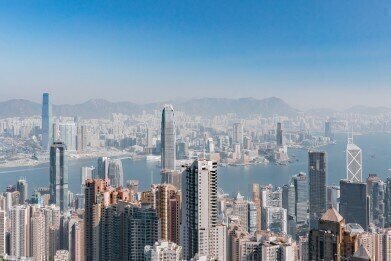Air Clean Up
Protestors Help Purify Hong Kong’s Polluted Air
Oct 25 2014
Air pollution is a major concern worldwide, with the negative impact on human health well documented. In Hong Kong, for instance, where roads are congested with old diesel-guzzling trucks, eye and skin complaints and respiratory problems are commonplace, while levels of lung cancer and cardiovascular disease are markedly higher than in rural areas. Many scientists and designers have suggested solutions – some stranger than others. Recently, architect Alexander Balchin suggested something new and potentially viable - a roving skyscraper complete with an enormous air filtration system, which you can read about here: China’s Movable Air-Purifying Skyscraper - Myth or Reality?
Although the risks related to air pollution are well known, Hong Kong’s government has refused to put in place the sorts of policies that are likely to clean the air. Instead, voluntary schemes have been implemented. However, Hong Kong’s roads remain clogged with vehicles, resulting in minimal change in air quality or road usage, until now…
Stopping traffic
On September 29th of 2014, a student-orchestrated sit-in resulted in the complete closure of sections of one of Hong Kong’s major roads. Bus services were cancelled or rerouted, delivery trucks returned to depots, and commuters boarded trains – or stayed at home. The pro-democracy protest occurred the day before a two-day national holiday and duly gathered steam. Soon, Hong Kong’s roads were clear, and official data showed that the levels of pollution present in the air had fallen dramatically.
Cleaner air was an unforeseen consequence of the student demonstrations. Yet it gave people a taste of what could be expected should the government adopt a more resolute approach when it came to air pollution. On September 29th, the health risk from air pollution fell in many areas, from high to low. Official readings concluded that the quantities of nitrogen oxide (and other harmful gasses) in the air fell dramatically. In heavily built up areas, such as Causeway Bay, nitrogen oxide levels dropped from 125 micrograms per cubic metre of air to 60 micrograms in just one evening, while in the retail district of Mong Kok, nitrogen oxide levels fell from 126 to 70.
Scientists concluded that the protest had an undeniable effect on air pollution levels - fewer vehicles on the road meant cleaner air for the people of Hong Kong.
Following the protest
After the protest, the figures relating to air pollution emerged. Many suggested Hong Kong’s governing officials had little choice but to respond with tougher anti-pollution laws. However, no new laws were put in place. Gas-guzzling vehicles returned to Hong Kong’s roads, buses resumed their ordinary routes and commuters climbed into cars instead of boarding the train.
Although the pro-democracy demonstrators evidenced exactly what could be achieved by merely reducing the number of vehicles on Hong Kong’s roads, nothing has been done to reduce air pollution since the protest occurred.
However, having experienced clean air for an afternoon in September, the people of Hong Kong are beginning to put pressure on their government, insisting that meaningful changes to the law be made sooner rather than later. The question remains: can Hong Kong’s governing officials continue to ignore the wishes of its people? According to recent estimates, Hong Kong's air quality problems are costing the city-state $6 billion a year in lost business, so a change could be good for the health of Hong Kong’s populations and their pockets.
Events
Apr 22 2024 Hannover, Germany
Apr 23 2024 Kuala Lumpur, Malaysia
Apr 24 2024 Sao Paulo, Brasil
May 05 2024 Seville, Spain
May 13 2024 Munich, Germany














